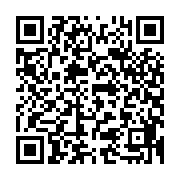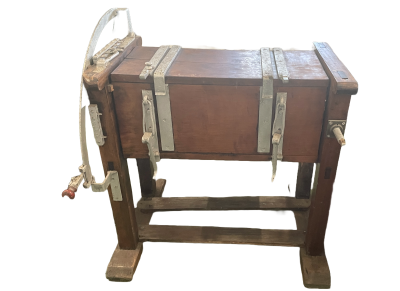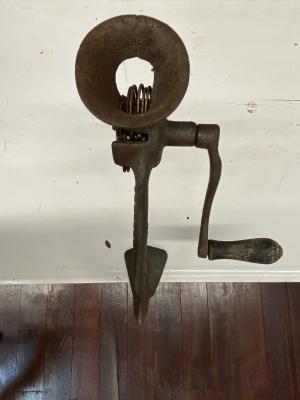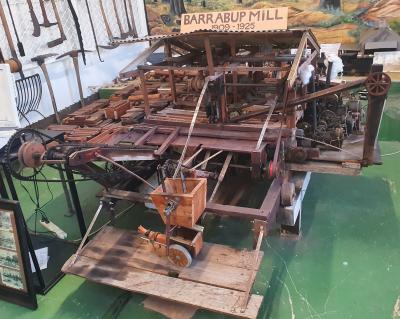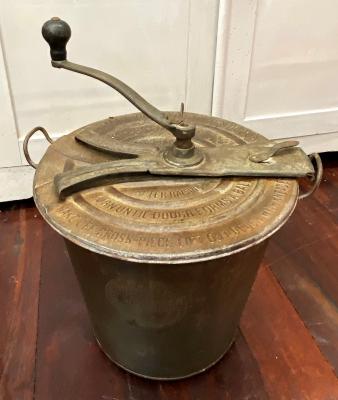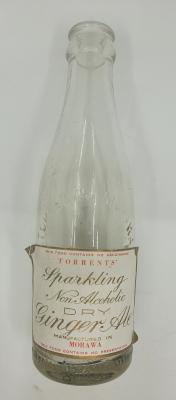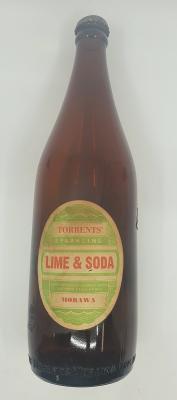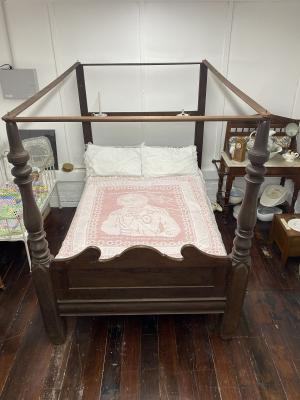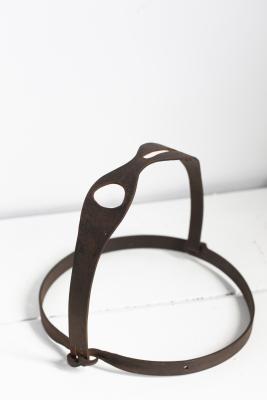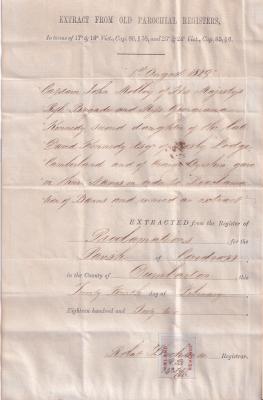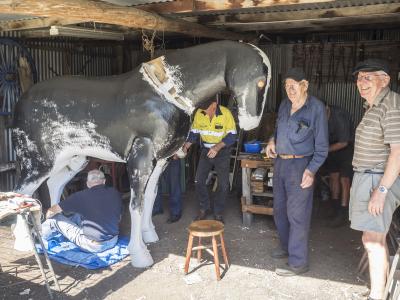Rotary Butter Worker / Kneader
c. 1900A rotary Butter Worker / Kneader with a kauri pine wooden body and cast iron components, made by E. Cherry & Sons, Gisborne. Butter workers like this one would be used in factories to finish the butter after it had exited the churn by mixing in salt and removing excess Butter Milk.
This Butter Worker is fastened to a wooden table by iron fixings and has a round carved wooden tray with a circular metal track extending around the outer rim. A wooden column, with a domed top, protrudes up from the centre of the tray and this has a small square outlet on one side, near to the base, to provide drainage. The butter mixture from the churn would be placed on the round tray and salt added as required. As the operator turned the crank handle it would engage with the metal track on the outer circumference of the tray causing the tray to rotate. The crank also spun the uniquely shaped roller, which is shaped like a wave, which would knead the butter mixture and force out the excess butter milk which would then drain into the hole in the centre column and be caught in a bucket placed under the table.
Edward Cherry migrated from Herefordshire England to Australia in 1855 and established a joinery workshop at Gisborne, Victoria. In 1858 he began experimenting with various models of butter churns and by 1875 had enough business to establish a factory. The Cherry works specialised in making all types of butter churns and equipment for both domestic use on farms and small butter factories. During the late nineteenth and early to mid twentieth centuries Cherry & Sons exported products to many countries around the world.
Edward Cherry ran the business with his sons until he died in 1909 and then the business was run by his son George until his death in 1917.
Details
Details
Etched into the upper arm of the wooden table
CHERRY'S PATENT
The butter churn was used to produce a solid butter product from the agitation of cream. However the churned product still needed to be salted and worked further to produce the desirable texture and taste. In early days of butter making salt was added for reasons of both taste and preservation. In the farm kitchen this process could be completed on a clean table with butter pats, however on a larger scale a Butter Worker like this one would be used.
The butter milk which was produced by this process would be fed to the pigs.
Other items by Cherry & Sons
More items like this
Other items from Busselton Historical Society
- Salmon Cleaning Bench
- Crown Raisin Seeder #4
- Model of Barrabup Mill - Carter Harbeck
- Universal Bread Maker #8
- Sparkling Ginger Ale Bottle - Torrents Morawa
- Sparkling Lime & Soda Bottle - Torrents Morawa
- The "Yelverton" Bed
- Chastity Belt
- Proclamation of Banns - Captain John Molloy and Georgiana Kennedy
- Sleeper Cutters Dray Display
- Len Woods Sulky
- Spring Cart with Super Spreader
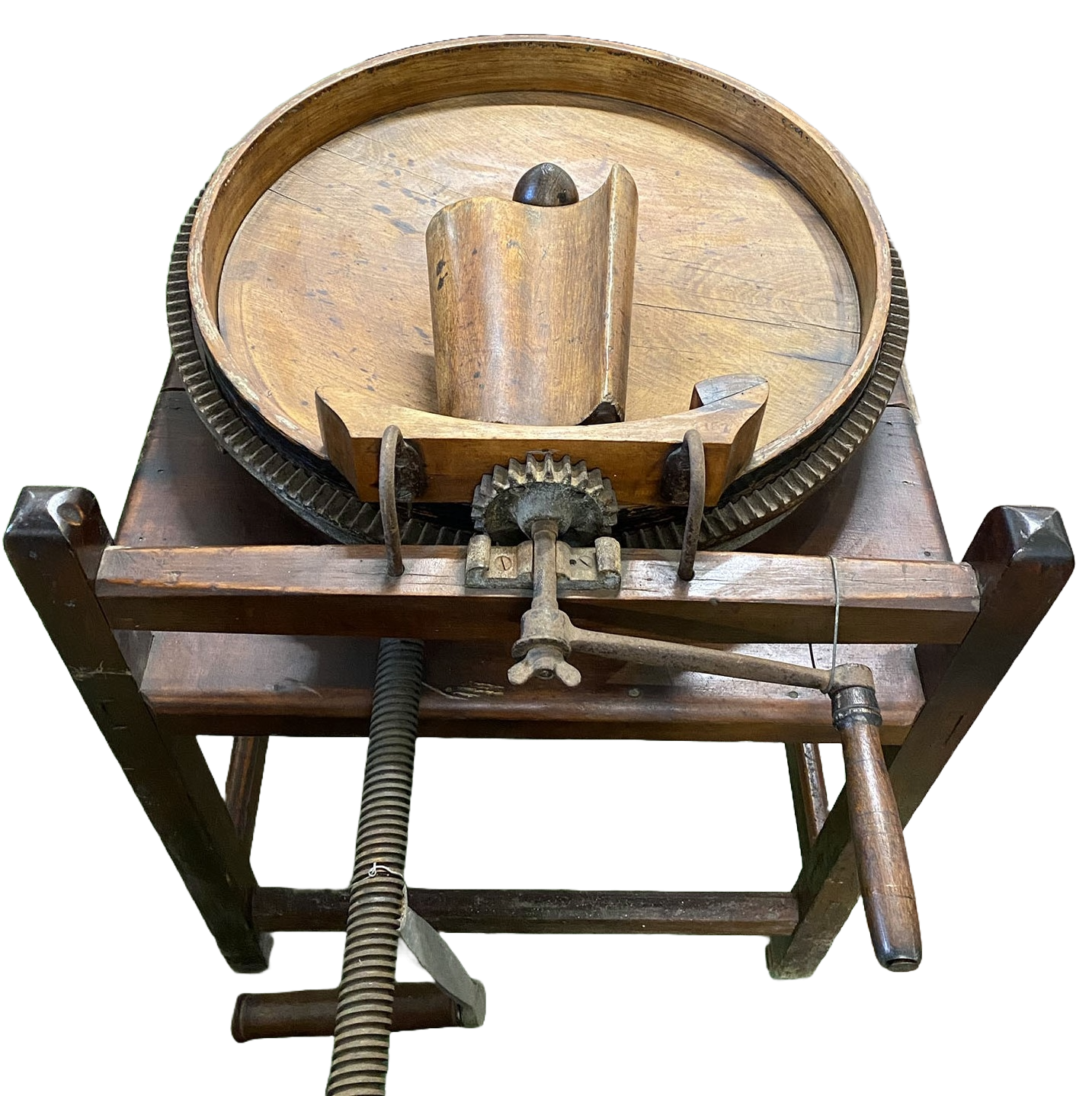
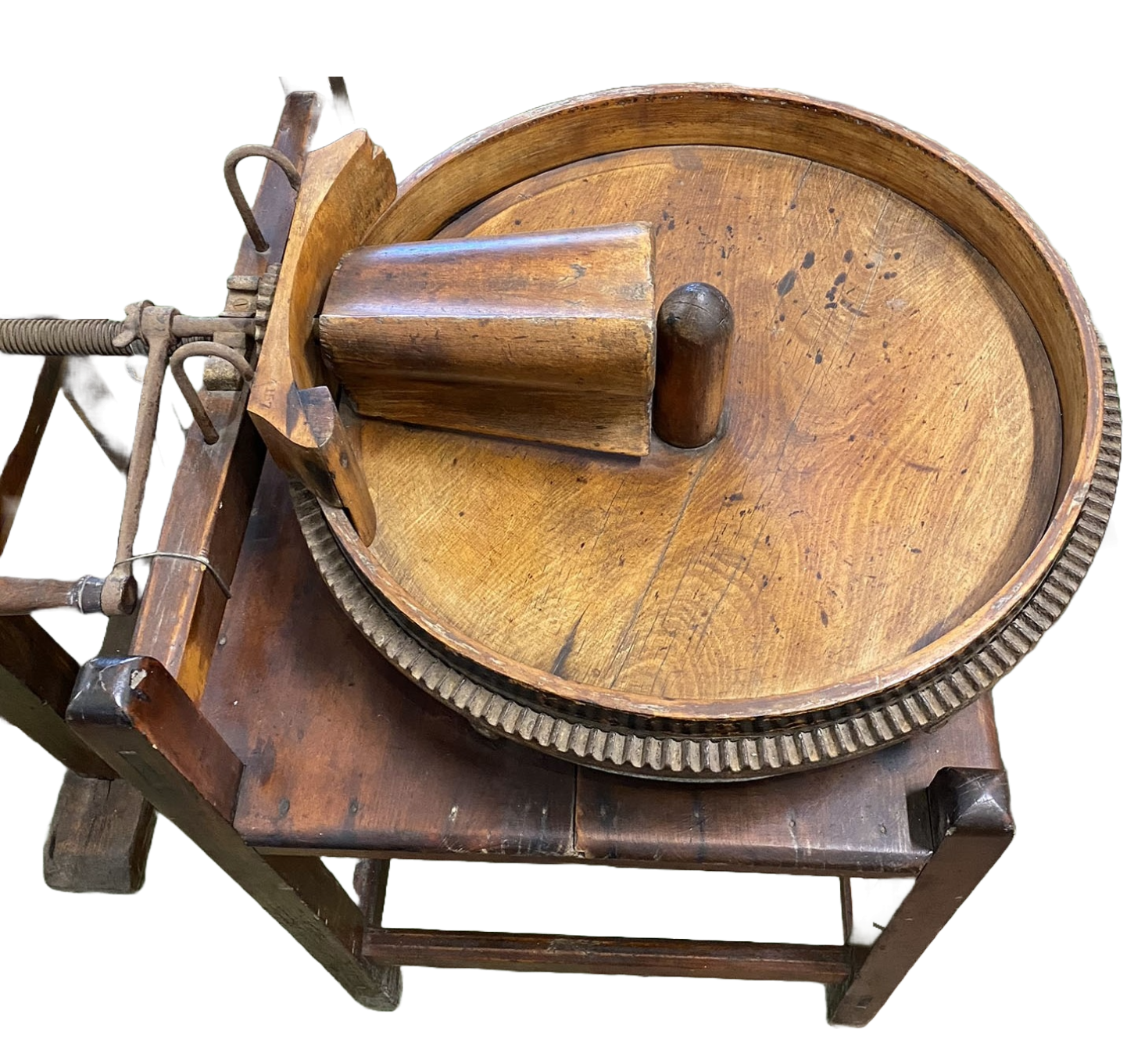

Scan this QR code to open this page on your phone ->
